Unforgettable Week! (CAFMA Vol-1)
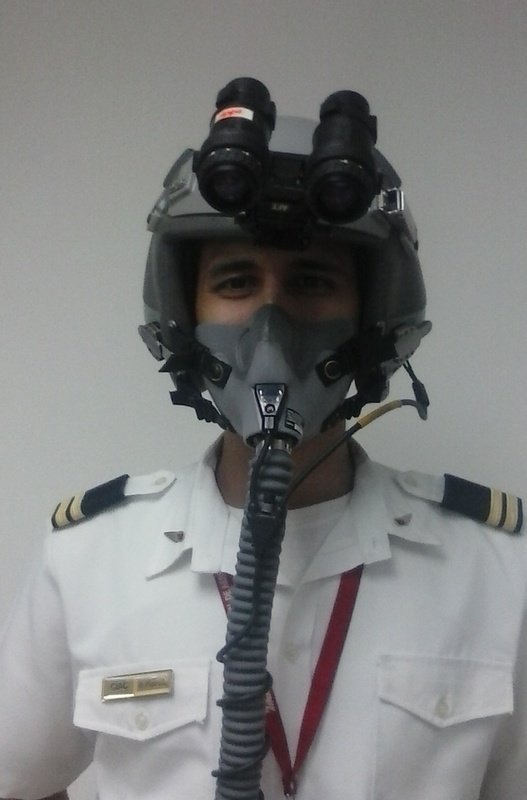
Hello Steemians!
"Unforgettable Week!" That was for me and for many of my classmate, the second week of the month of February of this great year. For people who have previously read my post, you know that I am being trained to be an Airplane Pilot, so part of the instruction includes experiencing what I had to live in last week. A great experience that I know, helped me to grow in the personal and in my future profession. That is why I would like to share with you how the famous "CAFMA" (Physiological Training and Aerospace Medicine Training Center) was going through this week, which was full of suspense, fear, a bit of trauma... but above all, and despite everything, a lot of knowledge!

The CAFMA Course is facilitated by the Bolivarian Military Aviation in my country, Venezuela. Prepare a lot of pilots for any physiological mishaps we may have on the flight. Promoting the motto "We train on the ground for safety in the air."
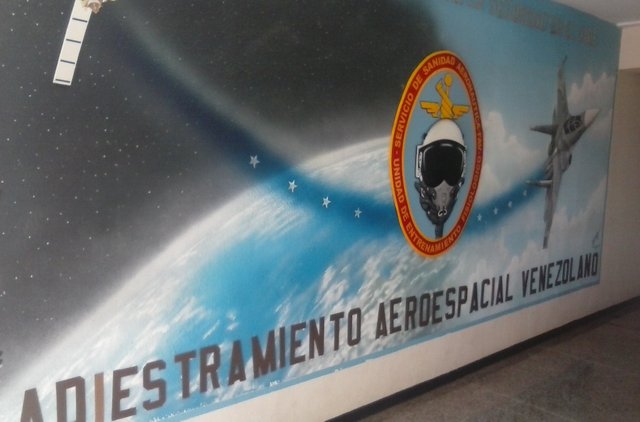
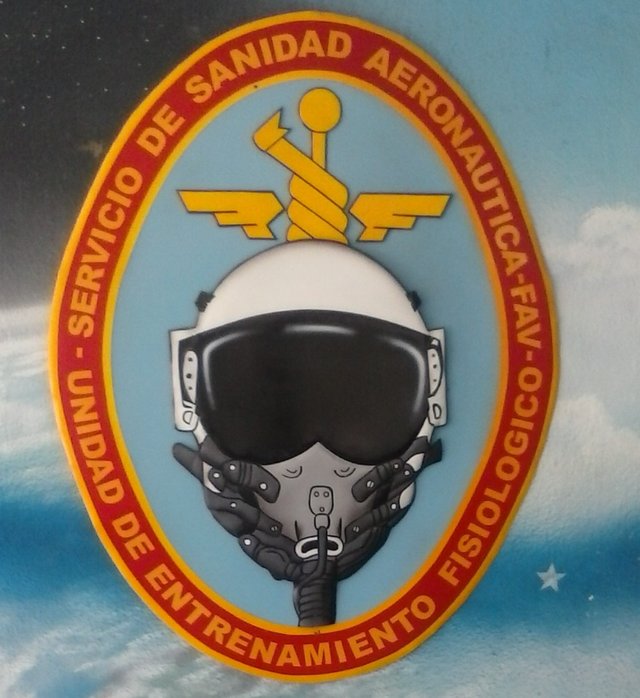
Well without nothing else to add, here I leave the photos and what we learned in the First day!
Night vision
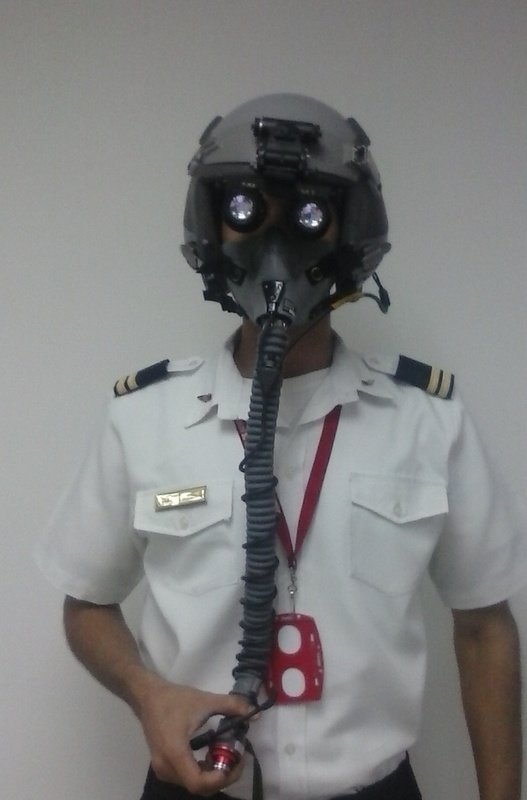
The first thing we should know about this topic is: What is the Vision?
It is defined as: "The process by which a luminous stimulus is isolated and identified in its shape, size, volume, color, location in space and movement." All this through what we know as the eyeball:
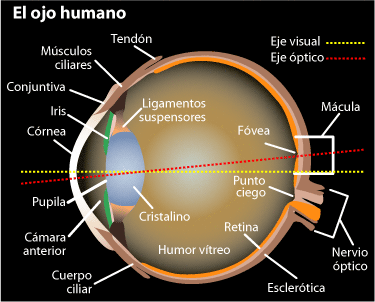
In this eyeball are the cones, photosensitive cells that make possible the vision in colors, located between the fovea (Fovéa) and the blind spot (Punto Ciego). There are three types of them and each one has a specific substance that depending on whatever, will be sensitive to red, blue or green. Erythropsin is the substance that has the highest sensitivity for red light, chloropsin for green light and cyanopsin for blue light.
We can also find in the eyeball some photoreceptor cells called sticks that make possible the vision when we are faced with conditions of low luminosity, are located in the periphery of the eyeball. The substance they possess is rhodopsin, which allows us to distinguish black, white and different grays. In other words it allows us night vision
Night vision or also called scotopic is the one that occurs with low levels of light, has greater presence of sticks and its adaptation is slow, that is why when there is a "blackout" it takes a moment to to capture the image of objects
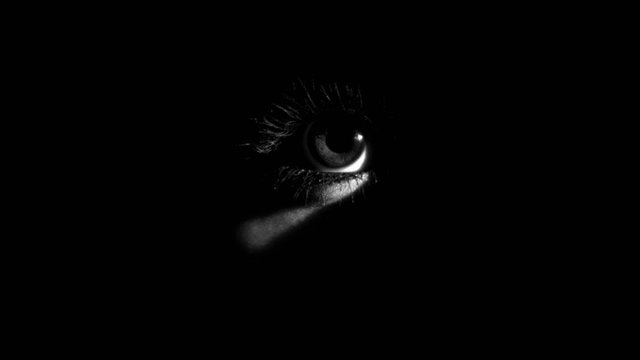
The most common optical illusions in flight
False Horizons: It is confusing a great mountain or inclined plane like a cloud, with the horizon. This can be avoided by looking at the artificial horizon. Whether it is visual flight or not.
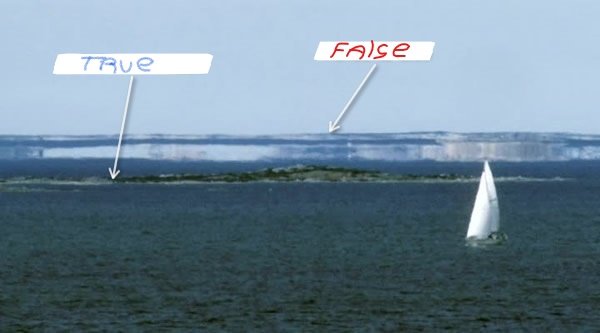
Confusion of lights: If you are doing a night flight it is possible to confuse light lights of the earth by stars and vice versa. The only way to be sure is to observe the instruments as an altimeter and speedometer to keep a controlled flight.
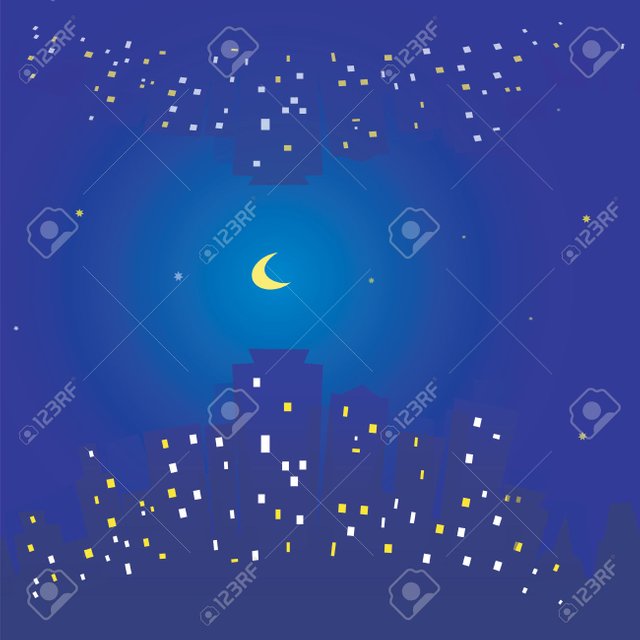
Autokinesis: Night visual illusion in which you perceive a moving light but in reality is immobile. To get out of this illusion, it flickers four times and the light should remain motionless unless it is actually moving.
Dazzled: It is a visual disorder of the moment, which is caused by sudden exposure to a greater intensity of light than the eye is adapted. The technique used in this illusion is to cover with one hand the eye that is dazzled and wait for what is causing the great intensity of light to end.
Relative Movement: It is the sensation of movement or acceleration proper that one has, when in fact it is the contiguous object that is moving or varying its speed. In aviation it happens a lot when flying in conjunction with other airplanes, in everyday life it happens when you are in the middle of a queue on the freeway with the brake on And you feel as if the car is moving forward.

Night vision goggles
They are devices capable of intensifying residual light from the environment and transforming it into infrared light.
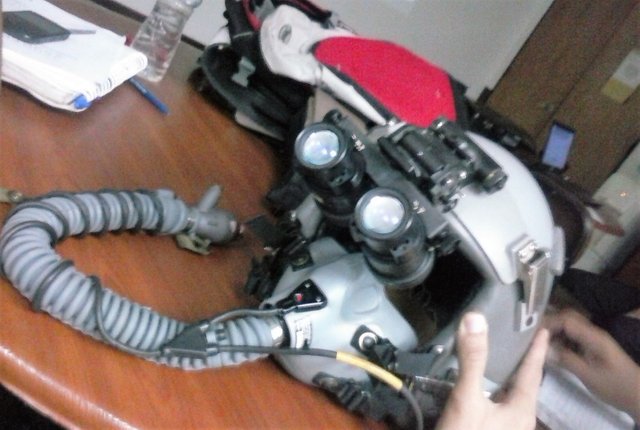
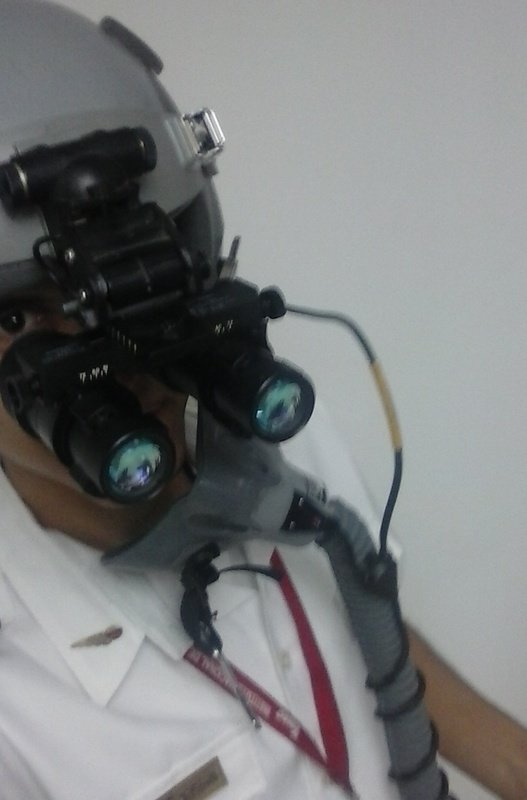
After we learned important points about vision, we were experiencing a few different types of "optical illusions". That moment was great! In the end we strengthened the knowledge learned.
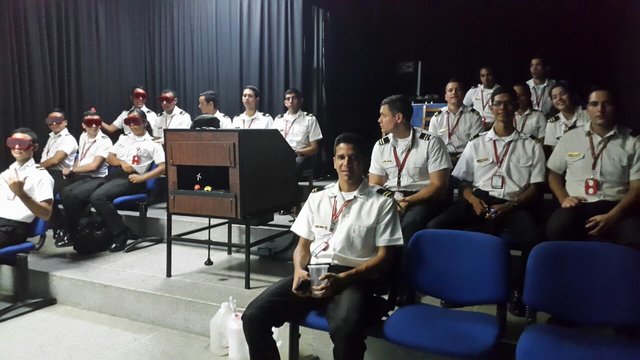
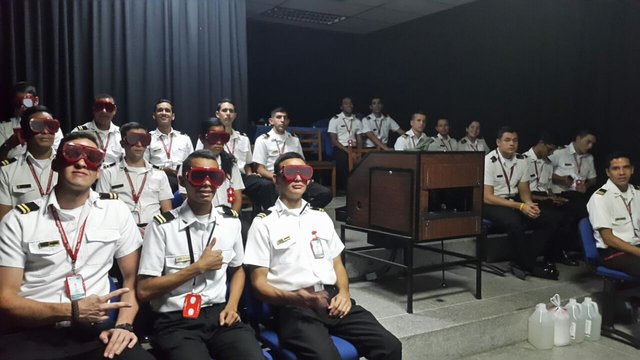
Here we were to start the activity. Those who had the lenses were stimulating the sticks so that when put the light off, their view was more adapted.
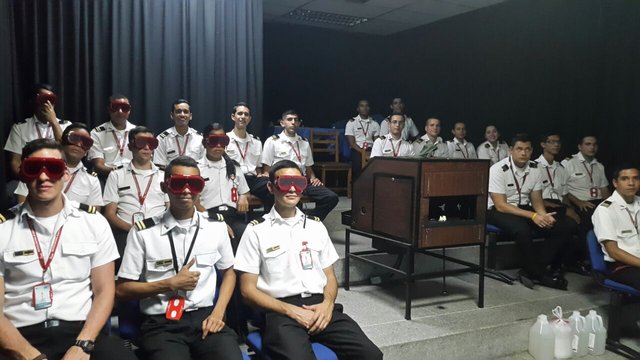
And that's how I had a full day of learning!
I hope you liked it. Soon I will be sharing what happened on the second day of the "Unforgettable Week!"
References:
http://cmae.fach.cl/wp-content/uploads/2014/11/15.pdf
Images Taken:
http://www.gusgsm.com/funciona_ojo_humano
http://espaciociencia.com/especial-halloween-los-10-mayores-miedos-del-ser-humano/especial-halloween-los-10-mayores-miedos-del-ser-humano-miedo-a-la-oscuridad/
http://ve.globedia.com/titanic-caso-cerrado
http://es.123rf.com/photo_30906825_perfecta-textura-de-cielo-nocturno-de-la-ciudad-las-estrellas-y-la-luna-edificios-y-luz-en-las-venta.html
http://lageneracionsiguiente.blogspot.com/2012/12/con-colas-de-varios-kilometros-de.html
The other images of my authorship.
Versión en Español
¡Semana Inolvidable! (CAFMA Vol - 1)

¡Buenas Buenas Amigos Steeminianos!
“¡Semana Inolvidable!” así fue para mí y para muchos de mis compañeros, la segunda semana del mes de febrero de este gran año. Para las personas que anteriormente han leído mis post, Saben que me estoy formando para ser Piloto de Avión, por lo que una parte de la instrucción incluye experimentar lo que me tocó vivir la semana pasada. Una gran experiencia que sé, me ayudo a crecer en lo personal y en mi futura profesión. Por eso quisiera compartirles como fue transcurriendo tan famosa semana en el CAFMA (Centro de Adiestramiento Fisiológico y Medicina Aeroespacial) que estuvo totalmente llena de suspenso, temor, un poco de trauma… pero sobre todo y a pesar de todo ¡mucho conocimiento!

El Curso CAFMA es Facilitado por la Aviación Militar Bolivariana en mi país, Venezuela. Prepara a gran cantidad de pilotos para cualquier percance fisiológico que podamos tener en el vuelo promocionando el lema “Entrenamos en tierra para la seguridad en el aire”.


Bueno sin más nada que agregar aquí les dejo las fotos y lo que aprendimos en el ¡Primer día!
Visión Nocturna

Lo primero que debemos de saber sobre este tema es: ¿Qué es la Visión?
Se define como: “El proceso mediante el cual un estímulo luminoso es aislado e identificado en su forma, tamaño, volumen, color, ubicación en el espacio y movimiento.” Todo esto mediante lo que conocemos como el globo ocular:

En este globo ocular se encuentran los conos, células fotosensibles que hacen posible la visión en colores, ubicados entre la fóvea y el punto ciego. Existen tres tipos de ellos y cada uno posee una sustancia específica que dependiendo cual sea, serán sensibles al colore rojo, azul o verde. La eritropsina es la sustancia que tiene mayor sensibilidad para la luz roja, la cloropsina para la luz verde y la cianopsina para la luz azul.
También podemos encontrar en el globo ocular los bastones, células fotoreceptoras que hacen posible la visión cuando nos enfrentamos a condiciones de baja luminosidad, están ubicados en la periferia del globo ocular. La sustancia que estos poseen es la rodopsina, la cual nos permiten distinguir el negro, el blanco y distintos grises. En otras palabras nos permite la visión nocturna.
La visión nocturna o también llamada escotópica es la que se produce con bajos niveles de luz, tiene mayor presencia de bastones y su adaptación es lenta, es por eso que cuando hay un “apagón” tardamos un momento en captar los objetos.

Las ilusiones ópticas más comunes en el vuelo
Falsos Horizontes: Se trata de confundir una gran montaña o plano inclinado como una nube con el horizonte. Esto se puede evitar viendo lo que nos indica el horizonte artificial. Sea vuelo visual o no.

Confusión de luces: Si estas realizando un vuelo nocturno es posible confundir luces tenues de la tierra por estrellas y a la inversa. La única forma de asegurarse es observar los instrumentos como indicador de altímetro y velocímetro para mantener un vuelo controlado.

Autokinesis: Ilusión visual nocturna en la que percibes una luz moviéndose pero en realidad esta inmóvil. Para salir de esta ilusión, se parpadea cuatro veces y la luz debería de quedarse inmóvil a menos que en verdad se esté moviendo.
Encandilamiento: Es un trastorno visual de momento, que es provocado por la exposición repentina a una intensidad de luz mayor a la que el ojo está adaptado. La técnica utilizada en esta ilusión consiste en tapar con una mano el ojo que se encuentra encandilado y esperar a que lo que está provocando la gran intensidad de luz termine.
Movimiento Relativo: Es la sensación de movimiento o aceleración propio que se tiene, cuando en realidad es el objeto contiguo el que se está moviendo o variando su velocidad. En la aviación ocurre mucho cuando se vuela en formación, en la vida cotidiana cuando estas en medio de una cola en la autopista con el freno puesto y vez como si el carro se está moviendo hacia delante.

Lentes de Visión Nocturna
Son dispositivos capaces de intensificar la luz residual del medio ambiente y transformarla en luz infrarroja.


Después de haber aprendido puntos importantes sobre la visión, estuvimos experimentando un poco varios tipos de “ilusiones ópticas”. Ese momento fue ¡genial! Al final afianzamos los conocimientos aprendidos.


Aquí estábamos por empezar la actividad. Los que tenían los lentes estaban estimulando a los bastones para que cuando se apagara la luz ya su vista estuviera más adaptada.

Y así transcurrió un día lleno de mucho ¡aprendizaje!
Espero les haya gustado. Próximamente les estaré compartiendo que paso en el segundo día de la “¡Semana Inolvidable!”
Referencias:
http://cmae.fach.cl/wp-content/uploads/2014/11/15.pdf
Imágenes Tomadas:
http://www.gusgsm.com/funciona_ojo_humano
http://espaciociencia.com/especial-halloween-los-10-mayores-miedos-del-ser-humano/especial-halloween-los-10-mayores-miedos-del-ser-humano-miedo-a-la-oscuridad/
http://ve.globedia.com/titanic-caso-cerrado
http://es.123rf.com/photo_30906825_perfecta-textura-de-cielo-nocturno-de-la-ciudad-las-estrellas-y-la-luna-edificios-y-luz-en-las-venta.html
http://lageneracionsiguiente.blogspot.com/2012/12/con-colas-de-varios-kilometros-de.html
Las otras imágenes de mi autoría.
Hey @benjaminpm96 a big congratulations! and upped!
Hi @simonjay thanks! Little by little but moving towards my goal. I'm glad that you enjoyed it! I'll soon share the Vol - 2. Regards